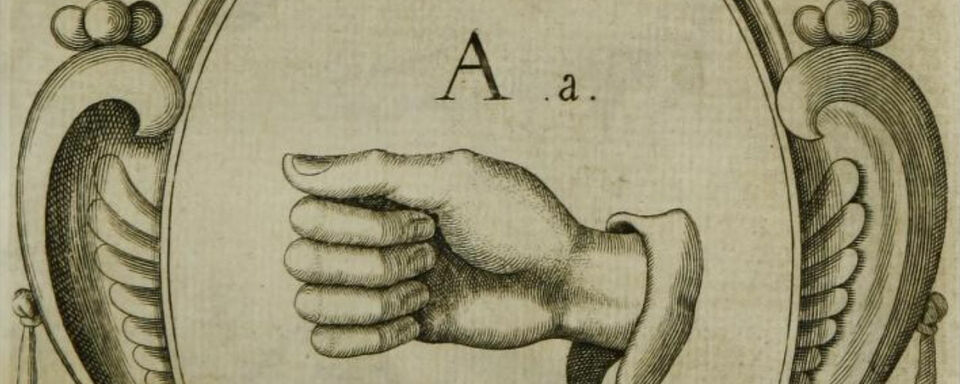
What are the Oldest and Coolest Books in the Gallaudet University Archives?
From the Archives
This is a guest post from Jerrod J. Grill, Archives Preservation Specialist at the Gallaudet University Archives.
People often ask me what the oldest or coolest books are in the Gallaudet University Archives. I always answer easily regarding the oldest book, but I have a difficult time picking which one is the coolest because we have many interesting and intriguing books in the Archives. For this post, I have picked the book I find to be the coolest and share the earliest book in our collection.
Both books are in the Charles Baker Collection, which was bought by Gallaudet University’s first president, Edward Miner Gallaudet, from the estate of Charles Baker, who was the headmaster of the Yorkshire Institution for the Deaf in England from 1819 until his death on May 27, 1874. Consisting of 528 books, the collection was then brought to Gallaudet University from England in the winter of 1874 after Baker’s death. Tom Harrington, a reference and instruction librarian who was considered one of the world’s authorities on deaf-related information, noted that the collection made up half of the university’s entire library holdings in 1874. The Baker Collection eventually became a part of the Archives’ Deaf Rare Books collection, which consists of over 4,100 rare books. Both Tom and another former librarian, Lucille H. Pendell, asserted that the Baker Collection is the nucleus of the Deaf Collections at Gallaudet, which today has grown to over 100,000 volumes.1
The oldest material in our Archives is a rare book, Chiromantia. It was published in 1546 by a German reformist priest, Johannes ab. Indagine (1467-1537), known also as Johannes Rosenbach. The language of its manuscript is Latin. In Latin, chiro means hands, while chiromantia means palmistry. The Latinized name of ab Indagine in his publications means “investigation” or “sign,” which invokes the idea of the manuscript aiding in the discovery of “signs.” Chiromantia is about the study of palmistry and astrology. There are several editions of Indagine’s work in different languages and by different publishers between the 1520s to the 1600s. Indagine studied the gestures from head to toe, especially the close-up details of the character readings on foreheads, noses, chins, and lines on hands. Stephanie Leitch states, “Indagine challenged the incontrovertibility of secrets by adding his own observations to the mix of received data. For instance, he expressed some skepticism about certain judgments made by nose-reading and cast aspersions on the diagnostic usefulness of the chin.” Despite the skepticism of his study, it became a standard work on the Catholic doctrine of the interpretation of the body structure, the face, and the hands. Some scholars from antiquity to the Middle Ages considered palmistry and astrology to be hard sciences.2
In my opinion, the coolest book in the Archives is Reduction de las letras, y arte para enseñar a habalr los mudos (“Reduction of letters and art to teach the mute to speak”) by Juan Pablo Bonet. It was published in 1620 in Madrid, Spain. Bonet was a Spanish monk and one of the early instructors of the deaf in the world. According to the American Annals of the Deaf, Reduction is the first book on the education of the deaf. The volume contains two parts, the first being “a treatise on the reduction of the names of the letters to their simple phonetic elements as a means of facilitating the process of learning to read.” The second part is “devoted to the method of teaching the deaf to speak and a grammar of the Spanish language adapted to the use of the deaf.” The most fascinating pieces of this volume are seven pages of engravings of manual alphabets that are almost exactly the same as our American manual alphabet today. The engravings were made by Diego de Astor, a 17th-century engraver from Toledo, Spain. Some pieces of evidence show that Abbé Charles-Michel de l’Epée adopted this book to teach deaf children in Paris, France. Abbé l’Epée developed Langues de Signes Français (LSF— French Sign Language), which is one of the precursors of American Sign Language (ASL). Deaf education in the United States was influenced by LSF when the language and its teaching methods were brought here by Laurent Clerc and Thomas Hopkins Gallaudet.3
The English version of Bonet’s book, published as Simplification of the Letters of the Alphabet and Method of Teaching Deaf-mutes to Speak, translated by H. N. Dixon (1620; repr., London: Hazell, Watson, and Viney, 1890), is digitized and available online. For more information about Reduction and Juan Pablo Bonet, check Deaf History and Culture in Spain: A Reader of Primary Documents by Benjamin Fraser (Gallaudet University Press, 2009).
If you’re interested in perusing the Gallaudet University Archives’ earliest and coolest books yourself, we have both books digitized and available online via the Internet Archive; check out the links below. You can also explore our curated digital collection of Deaf Rare Materials. Of the 190 books available, which one do you think is the coolest?
Works Cited
Joannes ab Indagine, Chiromantia. (London: Apud Petrum Drouart, 1546).
Juan Pablo Bonet, Reduction de las letras y arte para enseñar a [h]ablar los mudos (Madrid : F. Abarca de Angulo, 1620).
Notes
1. Lucille H. Pendell, “The Edward Miner Gallaudet Memorial Library Gallaudet College—Kendall Green Washington 2, D. C.,” American Annals of the Deaf 105, no. 3 (1960): 296, https://www.jstor.org/stable/44399628; Thomas R. Harrington, “The Deaf Collection at the Gallaudet University Library,” Education Libraries 22, no. 3 (1998): 6-7, https://doi.org/10.26443/el.v22i3.131.
2. Stephanie Leitch, “Getting to How-To: Chiromancy, Physiognomy, Metoscopy and Prints in Secrets’ Service,” in Quid Est Secretum?: Visual Representation of Secrets in Early Modern Europe, 1500-1700, ed. Ralph Dekoninck, Agnès Guiderdoni, and Walter Melion (Boston, MA: Brill, 2020), 641–2; Bart Jaski, “‘Chyromantia’ by Johannes Indagine,” Utrecht University Special Collections, 2011, https://www.uu.nl/en/special-collections/collections/early-printed-books/scientific-works/chyromantia-by-johannes-indagine.
3. “First Book on Education of the Deaf,” American Annals of the Deaf 113, no. 4 (1968), https://www.jstor.org/stable/44394329; Isaac Lewis Peet, “The Influence of the Life and Work of the Abbe de l’Épée,” American Annals of the Deaf 35, no. 2 (1890): 145, https://www.jstor.org/stable/44627200.



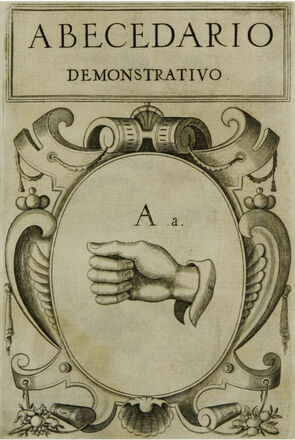
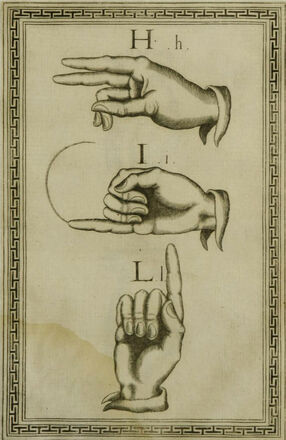
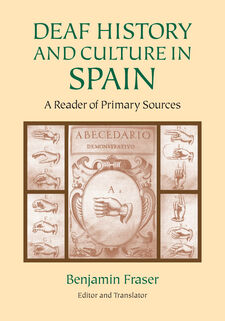
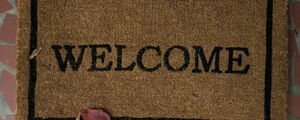
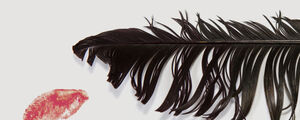
Comments